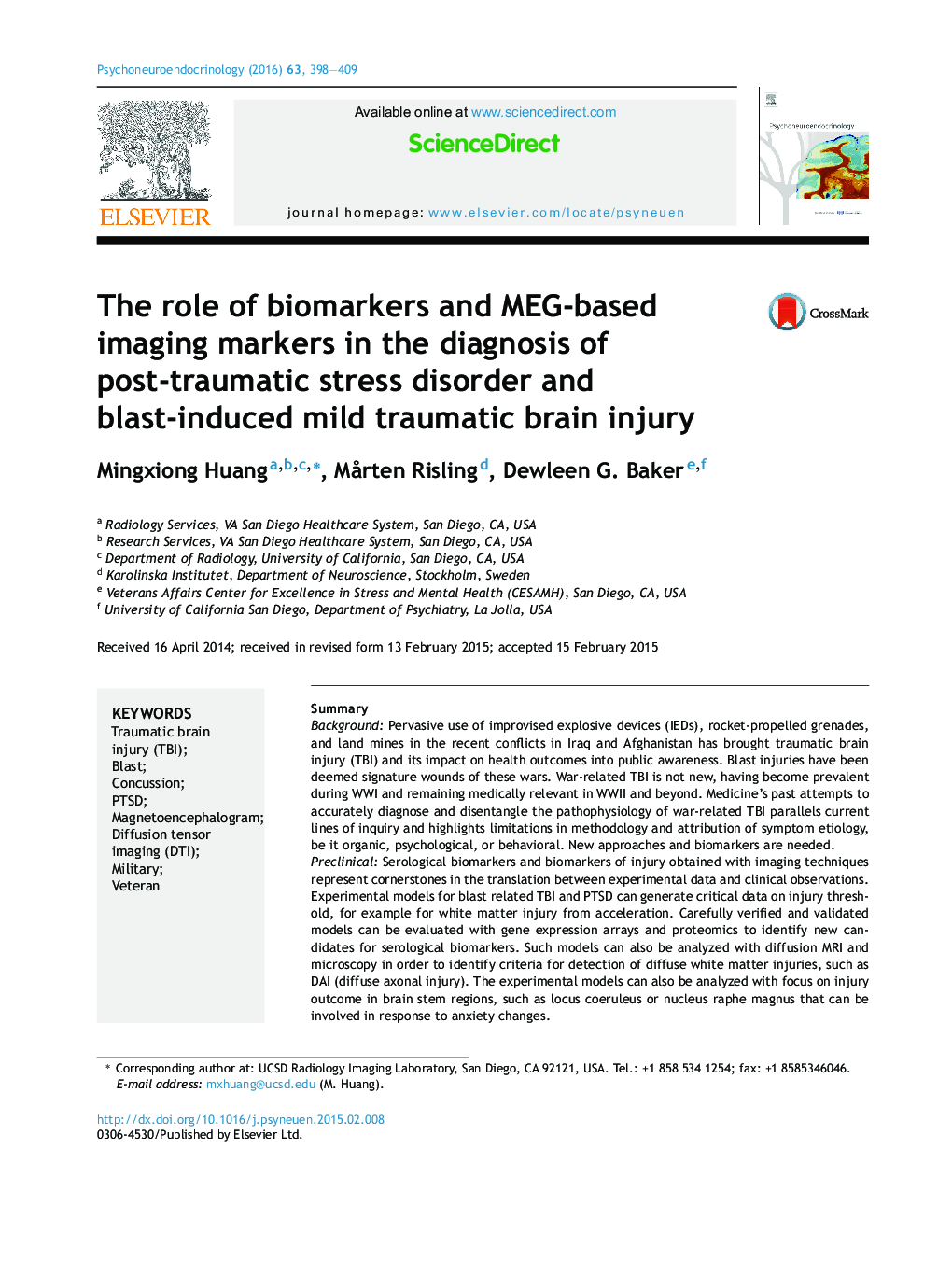| کد مقاله | کد نشریه | سال انتشار | مقاله انگلیسی | نسخه تمام متن |
|---|---|---|---|---|
| 6818613 | 547396 | 2016 | 12 صفحه PDF | دانلود رایگان |
عنوان انگلیسی مقاله ISI
The role of biomarkers and MEG-based imaging markers in the diagnosis of post-traumatic stress disorder and blast-induced mild traumatic brain injury
دانلود مقاله + سفارش ترجمه
دانلود مقاله ISI انگلیسی
رایگان برای ایرانیان
کلمات کلیدی
موضوعات مرتبط
علوم زیستی و بیوفناوری
بیوشیمی، ژنتیک و زیست شناسی مولکولی
علوم غدد
پیش نمایش صفحه اول مقاله

چکیده انگلیسی
Mild (and some moderate) TBI can be difficult to diagnose because the injuries are often not detectable on conventional MRI or CT. There is accumulating evidence that injured brain tissues in TBI patients generate abnormal low-frequency magnetic activity (ALFMA, peaked at 1-4Â Hz) that can be measured and localized by magnetoencephalography (MEG). MEG imaging detects TBI abnormalities at the rates of 87% for the mild TBI, group (blast-induced plus non-blast causes) and 100% for the moderate group. Among the mild TBI patients, the rates of abnormalities are 96% and 77% for the blast and non-blast TBI groups, respectively. There is emerging evidence based on fMRI and MEG studies showing hyper-activity in the amygdala and hypo-activity in pre-frontal cortex in individuals with PTSD. MEG signal may serve as a sensitive imaging marker for mTBI, distinguishable from abnormalities generated in association with PTSD. More work is needed to fully describe physiological mechanisms of post-concussive symptoms.
ناشر
Database: Elsevier - ScienceDirect (ساینس دایرکت)
Journal: Psychoneuroendocrinology - Volume 63, January 2016, Pages 398-409
Journal: Psychoneuroendocrinology - Volume 63, January 2016, Pages 398-409
نویسندگان
Mingxiong Huang, MÃ¥rten Risling, Dewleen G. Baker,